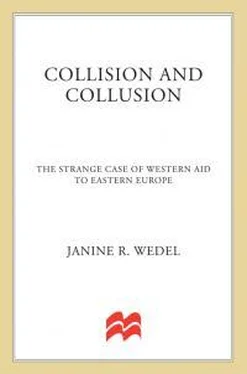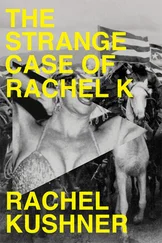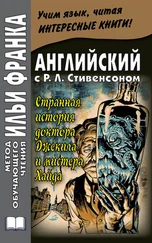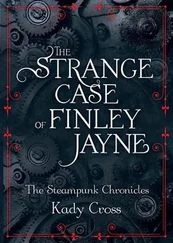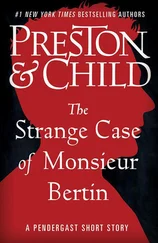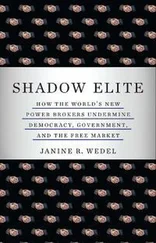— Foreign Affairs 1
IN THE FALL OF 1989, a mood of triumph swept West and East alike. The long-suffering peoples of Eastern Europe (Poland, Hungary, Czechoslovakia, Bulgaria, Yugoslavia, and even more isolated Romania and Albania) had risen up. Remarkably and unexpectedly, the Soviet Union, the nation Ronald Reagan had christened the “Evil Empire” and the West’s nemesis of the postwar era, was crumbling. Having won a victory that was not only political, but also moral and ideological, the West now had an unparalleled, historic opportunity to spread the fruits of freedom and free markets, to unite Europe, and to break down isolation between the two worlds. There was, it seemed, a meeting of the minds at last: The West had supported the spirit of resistance embodied in the movements led by Polish Solidarity leader Lech Wałęsa and Czech playwright Václav Havel, and in the aftermath of their success, the peoples of Eastern Europe embraced the democratic ideals and financial support offered by the West.
The prevailing idea, in both East and West, was that Eastern Europe should look to the West not only for financial help and political models, but also for economic strategies and cultural identity. “Democracy,” “freedom,” “markets,” and “civil society” became the bywords of 1989 and the early 1990s. Talk of a “return to Europe” filled cafes in Warsaw, Budapest, and Prague. Discarding the Soviet-tainted “Eastern” association, and believing they had been unwillingly pulled away from Europe by the politics of the Cold War, Poles, Hungarians, and Czechoslovakians asserted that they belonged to Central Europe. The end of communism reinvigorated enduring discussions of a “return to Europe.”2 The image was of a “lost-child-returning-home,” as Czech sociologist Michal Illner has characterized it.3
Given the abandonment of communism, Western capitalism and democracy were seen as the only reasonable choices: virtually no alternatives to the Western capitalist models of reform espoused by the international financial institutions were seriously entertained on either side.4 Part of the reason for this single-mindedness was that the peoples of the newly dubbed Central Europe were looking for simple answers. With little warning of impending difficulties from within or from the West, they hoped that their transition to democracy and free markets would be easy. And as Central Europe espoused Western models, so Western and Central European nations alike expected the West to open its doors and accept new responsibilities, to come in with accolades, affirmation, and aid.
The Marshall Plan became the reference point for the aid the West would provide to the “other Europe.” Leaders, policymakers, and pundits in both East and West compared post-1989 aid to Central and Eastern Europe, and later, after the dissolution of the Soviet Union in December 1991, to Russia, with the post–World War II effort to rebuild Europe. Alexander King, who participated in the Marshall Plan as director of the European Productivity Agency of the Organization of European Economic Cooperation from 1957 to 1960, asserted that “A new Marshall Plan in Eastern Europe could be very successful in giving those countries the infrastructure and attitude in labor and management that will enable them to compete.”5 Offered as an economic life raft by the United States to the ravaged states of all of Europe after World War II, the Marshall Plan, after Soviet dictator Joseph Stalin refused its aid, had helped to reconstruct only Western Europe.6 Now, a post–Cold War “Marshall Plan” would accomplish similar objectives in the East.
Both plans celebrated, and even symbolically consummated, America’s winning of a war—first in a literal sense, and 50 years later in a symbolic sense. Both “Marshall Plans” were to assist “First World” Europeans—first to remake Western Europe, and 50 years later to bless Central Europeans in their “return to Europe.” Furthermore, Central Europeans could now accept the Western generosity that Stalin had prevented them from accepting in 1947.7 The words “Marshall Plan” became almost a metaphor for America’s role as a white knight. They carried a powerful sentimental appeal that called to mind one of America’s most celebrated moments of global leadership and enlightened self-interest. A “new Marshall Plan” implied that Americans were still capable of grand and unselfish acts—and Central Europeans did not hesitate to make that flattering connection. Solidarity leader Lech Wałęsa, speaking to a joint session of the U.S. Congress on November 15, 1989, proclaimed:
It is worth recalling this great American plan which helped Western Europe to protect its freedom and peaceful order.… And now it is the moment when Eastern Europe awaits an investment of this kind—an investment in freedom, democracy and peace, an investment adequate to the greatness of the American nation.8
Throughout the West, donor nations, agencies, and individuals expressed their commitment to helping Central Europe. The European Union (EU) established Poland-Hungary Aid for Restructuring the Economy (PHARE), the largest aid program to the region. PHARE focused on Poland and Hungary, the first nations to dismiss their communist leaders in fall 1989. Other nations of the Soviet Bloc, whose governments subsequently collapsed that same fall, later joined the list of recipients.9 The Group of Seven (G-7) countries (Canada, France, Japan, United Kingdom, Germany, Italy, and the United States) convened meetings to organize multilateral activities. The Group of Twenty-Four (G-24),10 a larger body that included the nations of the G-7 and most of Western Europe, was established in 1989 to coordinate assistance to Central and Eastern Europe. The G-24 was chaired by the Commission of the European Communities in Brussels, which was given an unprecedented role in coordinating international assistance.11
In the United States, legislation was enacted on the very heels of communism’s collapse. In the last days of November 1989, the U.S. Congress rushed through the so-called SEED (Support for East European Democracy) legislative package.12 Championing the two nations that had led the revolutions, SEED authorized nearly $1 billion “to promote political democracy and economic pluralism in Poland and Hungary by assisting those nations during a critical period of transition.”13 Other nations of the region were added later. In addition, President George Bush established “Enterprise Funds” to promote the development of the private sector and other initiatives that would make American know-how available to the region.
Western development agencies were similarly galvanized into action. They reoriented resources and diverted personnel from the “Third World” nations of Africa, Asia, and Latin America to the “Second World” of Central and Eastern Europe, and later the former Soviet Union. In the aid community, the Second World became where the action was. By the end of 1992, the twilight of the aid push to the former Communist Bloc, the G-24 countries had committed $48.5 billion in aid (including export credits, loans, and rescheduled debt), of which $18.1 billion was grants, to help the nations of the region (see Appendix 1: Tables 1-4).14 Meanwhile, following the collapse of the Soviet Union at the end of 1991, aid was gearing up farther east. By the close of 1992, the G-7 countries had committed $81 billion,15 of which $16.8 billion was grant aid, to the former Soviet Union (see Appendix 1: Tables 5-8).16 The now independent states of Russia and Ukraine were to receive the lion’s share of Western aid to the ex-superpower. These sums appeared to be in the grand tradition of the Marshall Plan—more than enough to extend a firm lifeline to the beleaguered inhabitants of the former Eastern Bloc.17
Читать дальше
